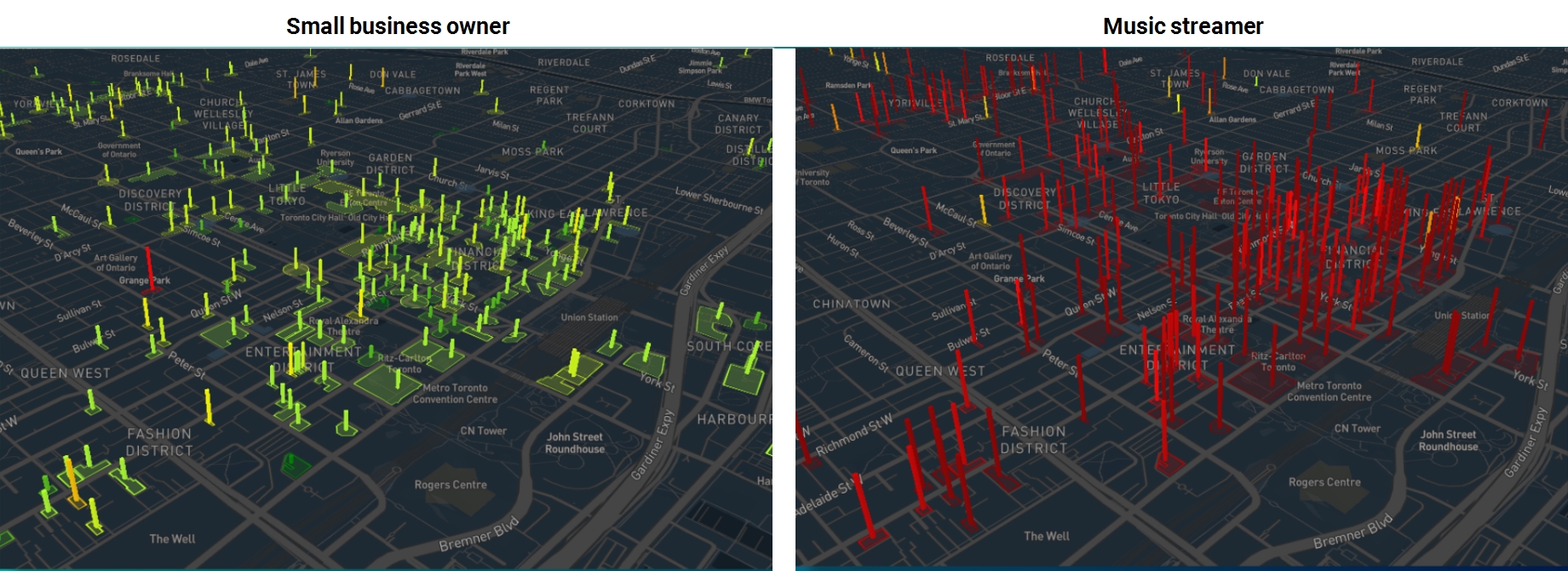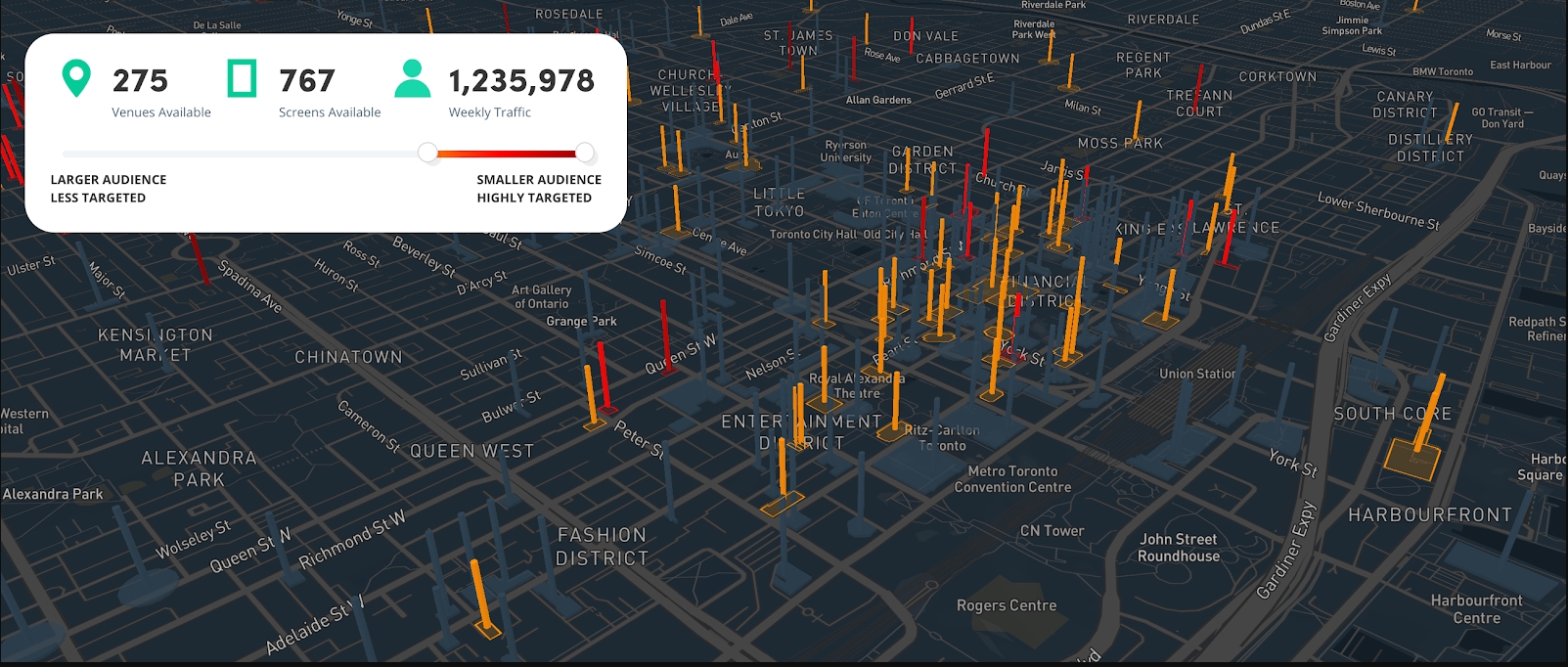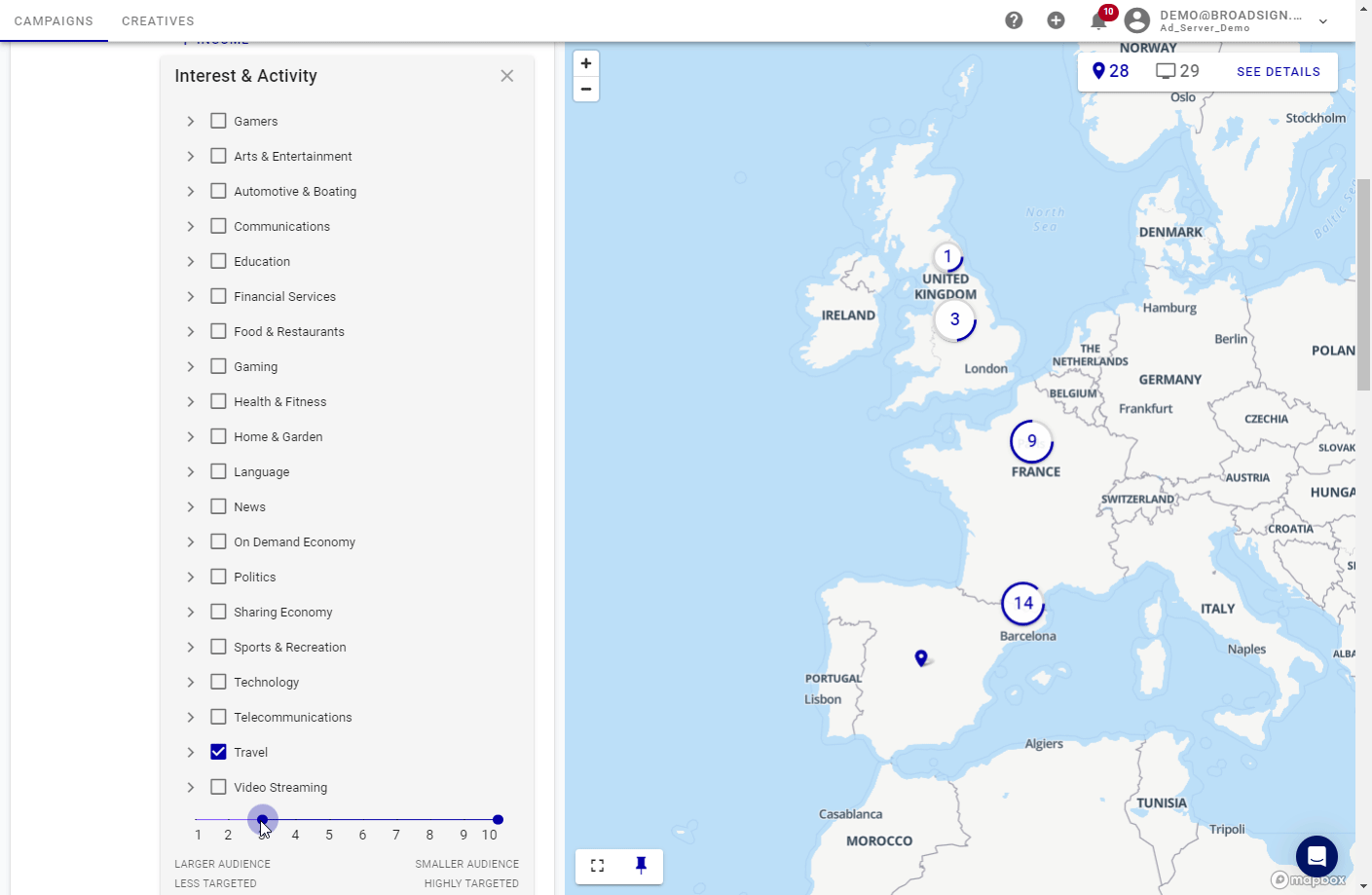When advertisers need to narrow down their screen selection to better reach their audience, mobile data is the way to go. It offers plenty of options and is universally applicable to all types of inventory.
Broadsign offers over 150 audience segments, categorized into:
- Age
- Income
- Interest & Activity
- Life Stage
- Intent
- Gender
For more information, see Demographics.
Mobile data collection over time will reveal audiences across all locations; however, the concentration of those audiences can vary significantly. This is visually represented on the map below, where each colored bar represents a venue where mobile data is being collected. Red (Music Streamer) indicates the highest concentration of a specific audience segment, while green (Small Business Owner) represents the lowest.
Here's how the Business Professional segment looks on a map. There's much more concentration difference from one venue to another.
Out-of-home advertising allows for precise targeting by focusing on screens located where the desired audience is most concentrated. This approach maximizes impact while minimizing wasted coverage. For instance, to reach the Business Professional segment effectively, we narrowed our selection from 2,628 screens down to 767, prioritizing those in areas with the highest concentration of this audience.
It's important to note that audience concentration at each venue can shift throughout a campaign as mobile data continues to be collected. Our targeting selection automatically adjusts to these changes, ensuring ongoing optimization and alignment with the latest data insights. This dynamic approach allows for greater precision and efficiency in reaching the target audience.
Since targeting reduces the number of screens where your campaign can play, it also limits the number of impressions that can be delivered for that campaign. The general idea is to keep enough screens to deliver your entire budget, but not too many to avoid diluting the message in less relevant screens.
Here's a campaign example:
- Targeted Persona: Travel
- Location: Europe
- Campaign duration: One month
- Budget: €10,000
The slider allows you to control the audience's concentration. Moving it to the right will select screens with the highest concentration but reduce the number of available screens. Moving it to the left will increase the number of available screens and make the audience less targeted.
Adding personas from different categories narrows down the available screen count.
Each persona category behaves with each other using the AND targeting logic. When you add criteria, you select, for instance, what screens have the highest concentration of [Age: 18-34] AND [Income: $75K - $100K] AND [Life Stage: Business Professionals]. For a screen to qualify for that campaign, it needs to meet all of the criteria; this narrows down the available screen count.
Adding personas within the same category increases the available screen count.
Within the same category, each persona acts like an OR targeting logic. When you select multiple personas, for instance [Life Stage: Business Professionals] OR [Life Stage: Students] OR [Life Stage: Parents]. For a screen to qualify for the campaign, it must be eligible for only one of these criteria. Therefore it will increase the available screen count as you add more criteria.
When defining audience targeting parameters, it's crucial to avoid placing multiple personas on the same line order. This practice can lead to unpredictable results due to the potential for personas to nullify each other.
For example, consider the "Hardcore Gamer" and "Social Gamer" personas. While it might seem intuitive to select both to reach all gamers, this approach can be counterproductive. These personas represent different values within the same "Interests and Activities" targeting category. Consequently, a screen qualifies as a match if it over-indexes on either persona, not necessarily both. This means one segment might over-index while the other remains close to the baseline or even under-indexes.
To avoid this issue, it's recommended to separate potentially conflicting personas onto different line orders. This ensures that each persona is evaluated independently, leading to more predictable and accurate targeting results.






